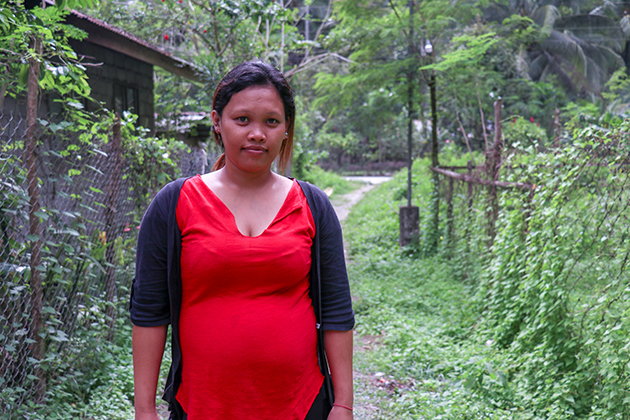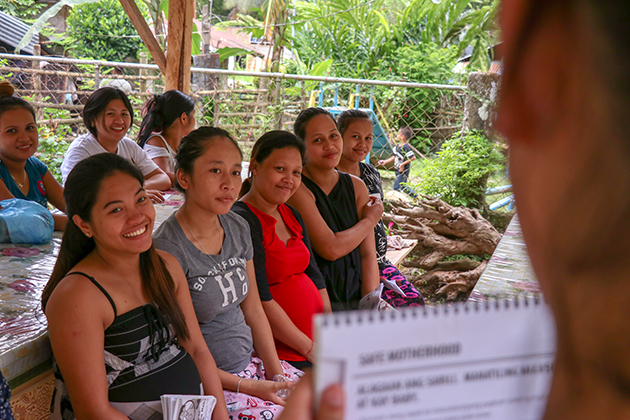No matter how good the health services are, they serve no purpose if no one knows about them or uses them. This is the reasoning behind the project by the World Health Organization (WHO), Department of Health (DOH) and the Korea International Cooperation Agency (KOICA) with the goal of reaching every community in select areas in the Davao Region so that the pregnant and postpartum women are aware and will use these health services.
In Elizalde in the municipality of Maco, health workers are instrumental in making this goal a reality. Leah Bersano is a newly-assigned nurse at the barangay (village) and she has seen the challenges that are fairly common in rural communities.
"I’ve seen that Elizalde is a big barangay with a big population," says Bersano. "For pregnant women who live in far-flung areas in the mountains, we have to visit them because they do not come here at the health centre. Especially if the weather is bad, we have to go to them so that we can see how they are doing."
This strategy is called Reaching Every Purok where the health workers track the pregnant women in a small community. In Elizalde, where mobile connection is not as reliable, pregnant women find value with this strategy.
"We don’t rely on cell phones. They really visit us here because if they don’t, we won’t be able to know about the services at the centre," says Khandes Mae Cogling, who is on her sixth month of pregnancy.

According to Bersano, the outreach has four components: check-up with a health worker, providing basic laboratory services for urinalysis, blood sugar, and haemoglobin check, dispensing of iron supplements, and education and counselling.
"Not all pregnant women have the correct knowledge about pregnancy, especially those who got pregnant at a young age. So we go to them. We encourage them to continue with their pregnancy with proper education," explains Bersano.
Bersano and the other health workers in Elizalde visit the communities armed with information, education and communication (IEC) materials to help in their health education activities.

"So with the help of the IEC materials – leaflets, flipcharts given by WHO and DOH – we are able to help the pregnant women have better knowledge about their pregnancy," says Bersano.
"We are thankful to the barangay health workers, midwife, and nurses because they are very active in doing the house-to-house visits. These visits are helpful not only for the check-up but to understand what we are allowed or not allowed to eat as well as the importance of getting vaccination for tetanus. This is beneficial not just for me but also for my baby," says Cogling.
